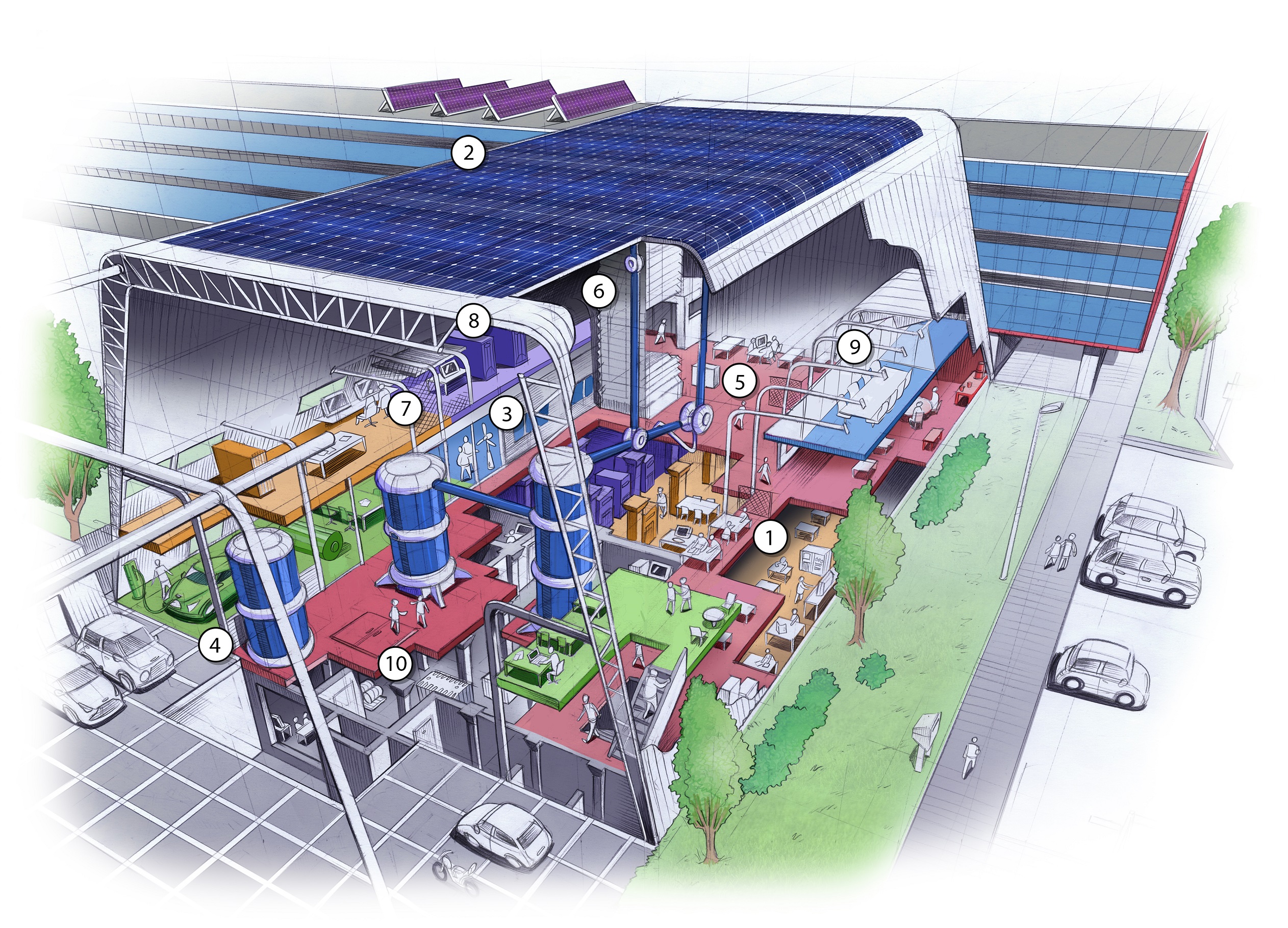ESP-Lab: Temple of electrical engineering
On 1 October, a new, future-oriented lab was opened in the former High Voltage Laboratory (Faculty of Electrical Engineering, Mathematics and Computer Science): the Electrical Sustainable Power (ESP) Lab.
The reason for the lab has become more urgent than ever since the latest IPCC report: renewable energy will need to quickly replace fossil energy if a climate disaster is to be prevented. But how do you develop a robust electricity grid based on fluctuating sources, such as solar and wind energy? This laboratory (at a cost of €20 million) has been established for this purpose, boasting both teaching and research facilities to educate future electrical engineers. Head of the department of Electrical Sustainable Energy, Prof. Miro Zeman, defines the lab’s mission as follows: “The system integration of new technologies and components in the electricity grid.”
The yellow zone (1) has been configured for solar energy. It will partly be used to test solar cells and develop smart modules. PV (photovoltaic) is one of the most important future energy technologies. The ESP Lab's huge solar roof (2) is anticipating that. Wind energy is another important source, mainly from large offshore wind farms. Part of the lab (3) has been set up to optimise electromechanical conversion in turbines and integrate the production of several turbines. The green sector (4) will be home to research into intelligent DC grids, power electronics, electrical mobility and storage. Electricity is transported over long distances at high voltages to reduce losses. The red sector (5) is reserved for high-voltage and transport networks, including practical research on high-voltage cables and connections. The combination of high voltages (of several 100,000 volts) and measuring minimal leakages requires advanced measurement technology. The towering impulse generator (6) and the high-voltage transformers that surround it in the hall play a special role. They can generate four million volts – a European record for academic laboratories, according to the manager – in order to test high-voltage components or the resilience of equipment to electromagnetic pulses. The surrounding laboratories and rooms are also isolated using a kind of gorilla wire mesh (7) that works as a Faraday cage (keeping electromagnetic radiation out). The Real Time Digital Simulator (RTDS) (8) can be used to calculate the impact on the Dutch grid of the addition or failure of a major energy source, such as an offshore wind farm. This supercomputer is a digital twin of the Dutch transport network and can calculate the effect of disruptions in real time. Tennet Hall has been set up for receiving guests (9), with rooms for students to work and meet behind it. Clearing out the basement has created a huge area that is partly being used for laboratories. In it, there are also climate installations and transformers (10) that can generate 1.5 million volts for HV experiments. The rooms are separated from each other by shiny metal walls.
